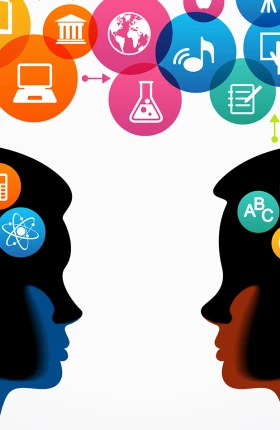How can the use of digital technologies in postsecondary education impact students’ access to education, student outcomes, and the return on investment for students and institutions? What are the biggest challenges for an institution seeking to implement high-quality digital learning opportunities? What promising practices enable an institution to achieve impact at a larger scale?
Those are the questions that fueled a research study, conducted by the Arizona State University Foundation and The Boston Consulting Group, with support from the Bill & Melinda Gates Foundation.
The answers, at least in part, lie in the case studies of six colleges and universities: Arizona State University, the University of Central Florida, Georgia State University, Houston Community College, Kentucky Community and Technical College System, and Rio Salado Community College. The first three institutions in this list are public research universities, representing different geographic populations and access missions. The other three institutions include two community colleges and a state-wide community college system.
These six institutions have a strong track record of using digital learning to serve large, socioeconomically diverse student populations, and each has been a pioneer in innovating to expand access to postsecondary education, improve student outcomes, and provide higher education at an affordable cost. The diverse nature of the case study institutions underscores the point that colleges and universities can apply digital learning in various ways that take into account individual contexts. Within these various examples are promising practices that a wide variety of colleges and universities can adopt to meet disparate needs, from accommodating enrollment growth to addressing a decline in funding.
The study’s methodology was designed specifically to examine the ROI of digital learning under different conditions and scenarios. We carefully examined both the upfront and ongoing costs of supporting digital learning, as well the returns in terms of student access, student outcomes, and economic impact on both students and institutions.
The study found that when colleges and universities take a strategic approach to digital learning and invest in the design and development of high-quality courses and programs, they can achieve three critical objectives:
- Deliver equivalent or improved student learning outcomes. Institutions in the study reported higher retention and graduation rates for students who took least a portion of their degree program online. Such students also earned their degrees faster, saving them money on tuition and fees and enabling them to enter or return to the workforce sooner.
- Improve access, particularly for disadvantaged students. The institutions we studied increased access on multiple levels—in the total volume of student enrollment and in the proportion of specific populations, including Pell Grant-eligible students, older students, and female students.
- Improve the financial picture by growing revenue while reducing operating costs. When we compared the overall costs of online courses with average costs at four of the institutions in the study, we found that the savings for online courses ranged from $12 to $66 per credit hour, a difference of from 3% to 50% of the average credit hour costs.
The findings provide a better understanding of how each institution adopted successful digital learning approaches and what impact they had. On the basis of our review of the six institutions, we identified seven promising practices:
- Take a strategic portfolio approach to digital learning. The most successful institutions have developed a portfolio of digital delivery models tailored to the particular needs of different student populations.
- Build the necessary capabilities and expertise to design for quality in the digital realm. Effective online learning depends on courses and curricula that are properly designed for the unique challenges and opportunities of the modality. Institutions committed to achieving online outcomes that are similar to or better than those for face-to-face courses must make significant investments in instructional design, learning science, and digital tools and capabilities.
- Provide the support that students need to succeed in fully online learning. To help students meet the challenges that many of them experience when learning online, institutions need to offer a network of remotely accessible support structures adapted to the needs of online learners.
- Engage faculty as true partners in digital learning, and equip them for success. One common barrier to success in digital learning is faculty skepticism. Institutions need to engage and support faculty in the digital learning journey—for instance, by giving faculty a voice in key decisions, providing professional development opportunities, and fostering a culture of pedagogical innovation.
- Fully commit to digital learning as a strategic priority—and build the infrastructure necessary to ensure lasting impact. Higher-education leaders who want their digital initiatives to continue long after they have departed from the scene need to attract a groundswell of support among faculty and build an infrastructure that ensures high-quality instruction and sustained momentum (such as a central team that can manage the digital learning portfolio).
- Tap outside vendors strategically. The institutions in our study identified their strategic goals and then carefully determined which functions or capabilities they wanted to develop in-house versus outsourcing. Often, institutions can advance innovation, expand capabilities, and increase enrollment faster through successful partnerships than by trying to build everything in-house.
- Strengthen analytics and monitoring. In the digital realm, faculty and administrators have access to a cornucopia of data that they can use to engage in continuous improvement. To harness that data, institutions must develop strong research and analytical capabilities, along with the reporting systems necessary to make the data actionable.
Colleges and universities that want to increase enrollment, expand access to high-quality education, and improve student performance—all at lower cost—should strongly consider investing in the improvement and scaled enterprise implementation of high-quality digital learning. The accumulating evidence indicates that well-planned and well-executed digital learning can be enormously valuable for institutions and students. The evidence also demonstrates that the more experience colleges and universities obtain, the faster they can successfully scale up innovations.
Now is the time for leaders to champion the potential of digital learning to open the doors of higher education wider and to improve student outcomes, while operating more efficiently and at lower cost. The journey of each college or university will be unique, but the set of promising practices described in this report may serve as a useful guide for all institutions.









